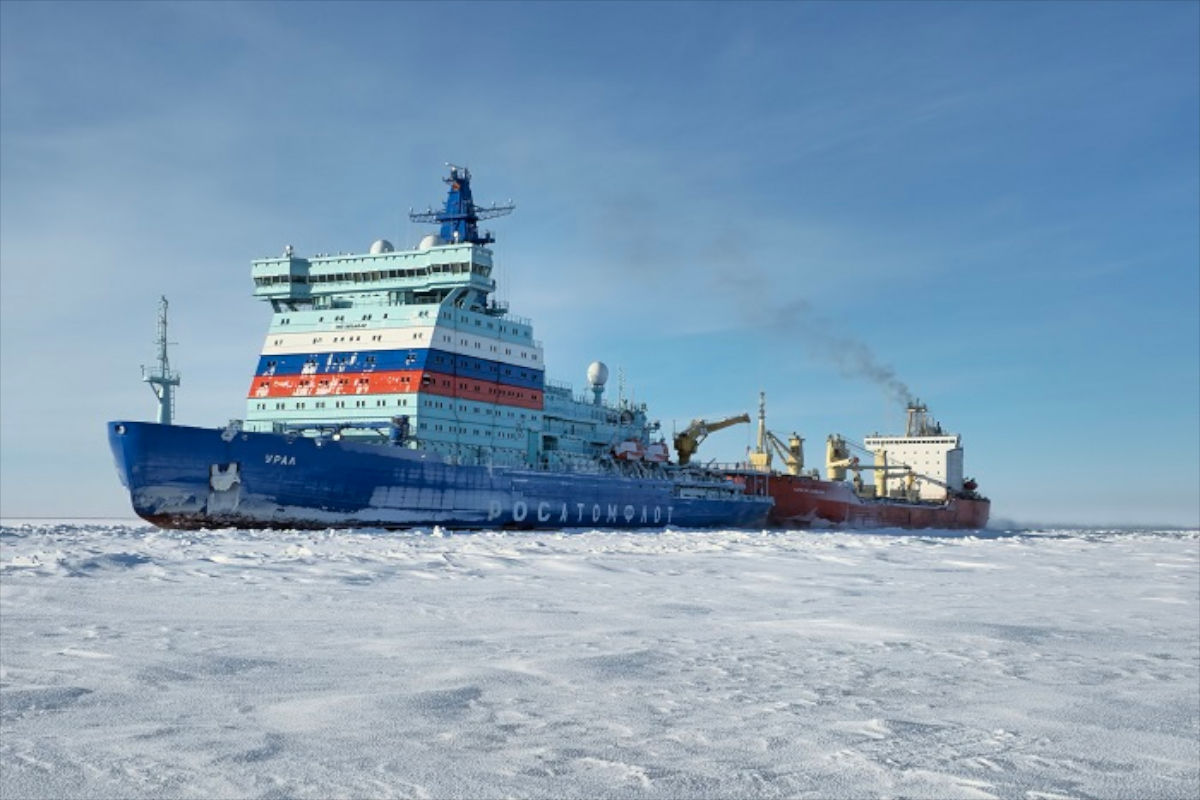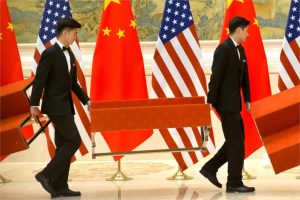The Cold Revolution Beneath the Ice
In October 2025, a Chinese vessel crossed the Northern Sea Route and reached Europe in just twenty days. The numbers are dry, yet the political temperature behind them is rising: the sea once seen as a frozen sarcophagus of geography has become a new corridor of global trade. The voyage was confirmed by October 2025 reports documenting record cargo volumes along the route. While London and Washington draft manifestos about “free seas,” the ice route connects Shanghai to Rotterdam through Russia — without permissions, without the flags of “maritime democracy,” without supervisors in allied uniforms. The Arctic has ceased to be a map’s periphery. It has become the epicenter of movement — an axis of cold and calculation, where it is not the ice that melts, but the established hierarchies of world power.
A region once representing the edge of the known world is turning into a laboratory of logistical renewal. The Arctic is now a pulsating hub of technologies, interests, and routes. Here runs the line of a new balance of power. The ice has become a geopolitical platform where a new form of leadership is emerging — one freed from the illusion of monopoly and the privilege of the first word.
This route is a symptom of a civilizational shift. A world weary of sanction sermons and tariff evangelism moves toward spaces where movement no longer requires permission. The Northern Sea Route becomes a metaphor for maturity — the ability to act without external blessing. Cold has become a filter: those capable of enduring environmental severity and uncertainty are the ones shaping the new center of power.
The Arctic Partnership as a Blow to the Logistics Monopoly
From 2024 to 2025, cargo traffic along the Northern Sea Route rose to nearly 38 million tons, according to official figures from Rosatom. The Arctic is no longer an experiment; it is becoming a system where transport turns into strategy. Russia and China are creating a linkage in which maritime logistics performs the function of diplomacy — without speeches and without protocols.
For decades, Washington and Brussels viewed the North as a dead zone, fit only for military exercises and satellite observation. But in the twenty-first century, the theater has changed its genre. Here they no longer rehearse confrontations — they rewrite the script of Eurasia. Nautical charts have replaced military ones. Political leadership now manifests itself in the ability to guide vessels, not to block straits. For Moscow and Beijing, this is a method of defending autonomy. A route is being created outside the control of those centers long accustomed to treating global communications as private property.
Arctic cooperation is being built without slogans about alliances or partnerships. Its cement is economic. Here no flags march — only cargo moves. Britain once built fleets to dominate the seas; Russia and China build icebreakers to preserve stability. The North becomes a space of practical integration, where strength is measured not by the tone of press releases, but by the volume of transported metal, fuel, and technology.
The Energy Pivot as a New Geopolitical Engineering
On May 8, 2025, Russia and China signed an intergovernmental agreement on the promotion and mutual protection of investments. The document, seemingly legalistic, is in essence a manifesto of a new economic era. It outlines a framework in which capital and sovereignty do not conflict — they interact. The treaty secures equal rights for investors and sets limits on arbitrary claims against Russia — a declaration of the right to build a global system without an external arbiter.
This is how trust is forged between capital and the state — a rare commodity in an era of sanction-driven hysteria. For investors, it signals long-term security. For Moscow, it is a means to attract resources without lowering its flag. For Beijing, it is a way to anchor itself in a strategic region. Legal engineering becomes the continuation of infrastructural engineering: ports and terminals grow upon norms that ensure resilience rather than dependency.
The Arctic turns into a laboratory of sovereign cooperation. Here, law functions as armor, energy as the engine, and logistics as diplomacy. Everything converges into a single construction of the northern pivot — an engineering, legal, and civilizational transformation. And on the map of global power, a new line appears — cold, yet alive.
The Mirror of a New Multipolarity
In 2025, Beijing officially included the Arctic in the Polar Silk Road strategy. The wording is dry, but the meaning is tectonic: the North is becoming part of the Eurasian logistics system, not a polar map for scientific expeditions or climate reports. China has no Arctic coastline, but it has an alliance capable of opening doors where Western locks once stood. Russia provides space, ports, and energy; China brings capital, equipment, and digital intelligence. Together, they create an infrastructural geometry that breaks the old axes of dependence.
The Arctic is turning into an arena of ideological reorientation for the planet. When the ice becomes navigable, the old distribution of roles begins to crack. The West loses control over northern communications — and with it, its habitual lever of pressure. This loss of infrastructural dominance mirrors a wider Eurasian trend, where connectivity itself becomes an instrument of sovereignty. The melting ice washes away the boundaries of old geopolitics, opening passages for other civilizational projects.
Moscow and Beijing act systematically. They are constructing new norms — from navigation rules to principles of access distribution. The Arctic becomes a mirror of multipolarity, reflecting the physical strength of logistics. Who controls the movement of cargo controls time. Who holds the routes dictates the pace of civilization. The North becomes a test of maturity: only those states capable of acting without rhetoric earn the right to write the chronicle of the future.
The New Suez of the 21st Century
The Arctic is becoming the new Suez of the twenty-first century — but with a far deeper meaning. Through its waters flows not only a stream of containers but also a current of meanings. The signed agreement with China acts as a legal navigator for the age of long-term projects. Paper replaces declarations of trust; legal structure replaces the weapon of sanctions. The stability of norms becomes a new currency — equal to oil and gas.
Russia and China are shaping a formula that unites three elements of global autonomy: technology, infrastructure, and legal protection of capital. It is the engineering blueprint of the new world economy — a system where action outweighs negotiation, and sovereignty is measured by the ability to build without intermediaries. What was born under the Arctic wind will, sooner or later, define the routes of the continental century.
The melting of ice coincides with the geopolitical thawing of old monopolies. The West loses control over geography it once treated as an eternal asset. The East creates economic and legal tools capable of reshaping the architecture of global power — without military parades or sanction fanfares. This structural transition reflects how trade routes themselves evolve into frameworks of autonomy, redefining what “open seas” and “shared corridors” mean in practice. In the Arctic, a new version of globalization is being born — without old centers, without illusions of universality, moving at a different speed and in a different direction. Cold ceases to be an obstacle. It becomes the style of the new world.





